Opportunity knocks for hydronic heating industry
Manufacturers weigh-in on current market trends.

Photo Courtesy of Navien
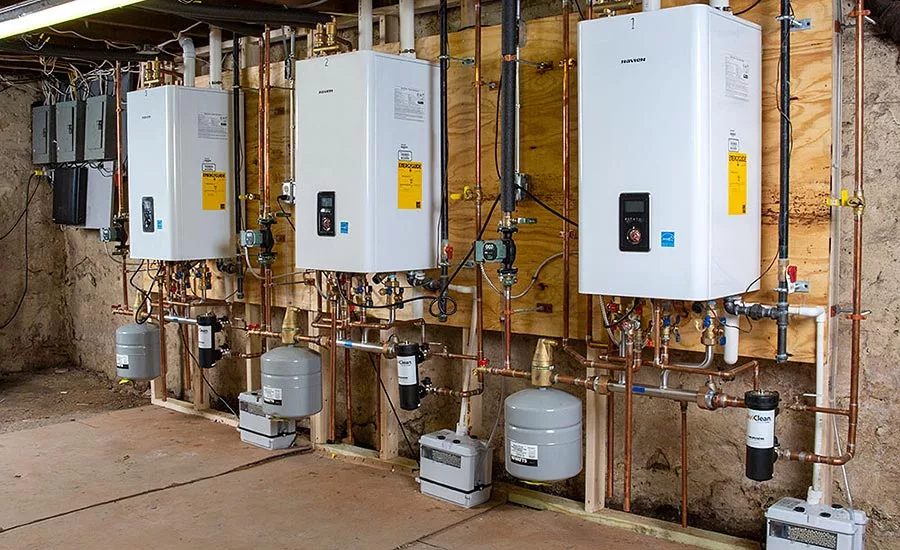
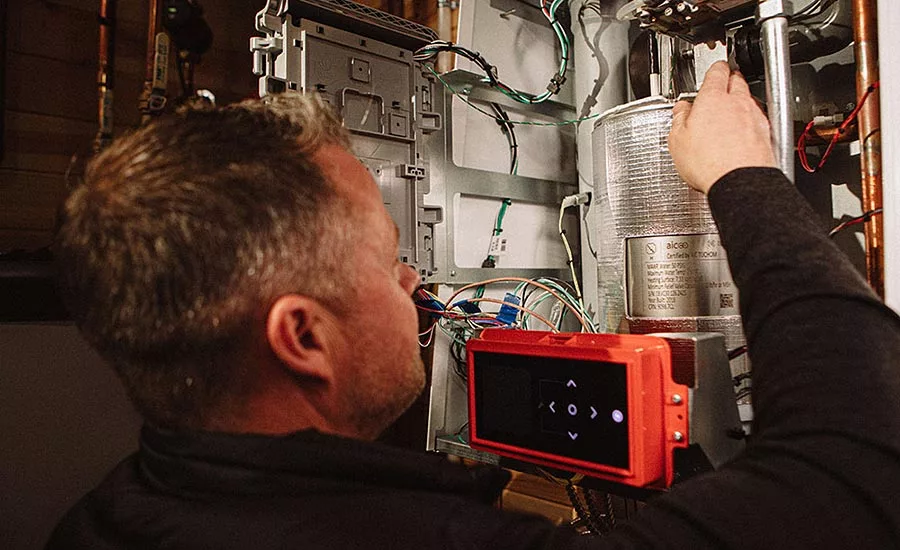
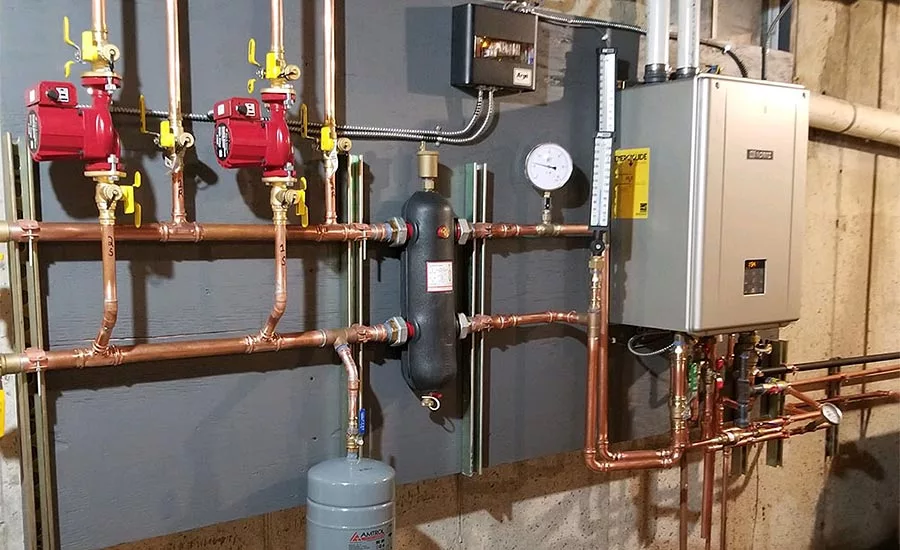


There have been numerous studies over the years touting all the benefits of hydronic heating systems, including improved comfort and energy efficiency. While these systems used to be more prevalent in the U.S. prior to the 1950s, builders began choosing warm air furnaces simply because they were a cheaper option than boilers. However, many industry experts think that could change with the advent of new hydronic products and technology presenting an opportunity for market growth.
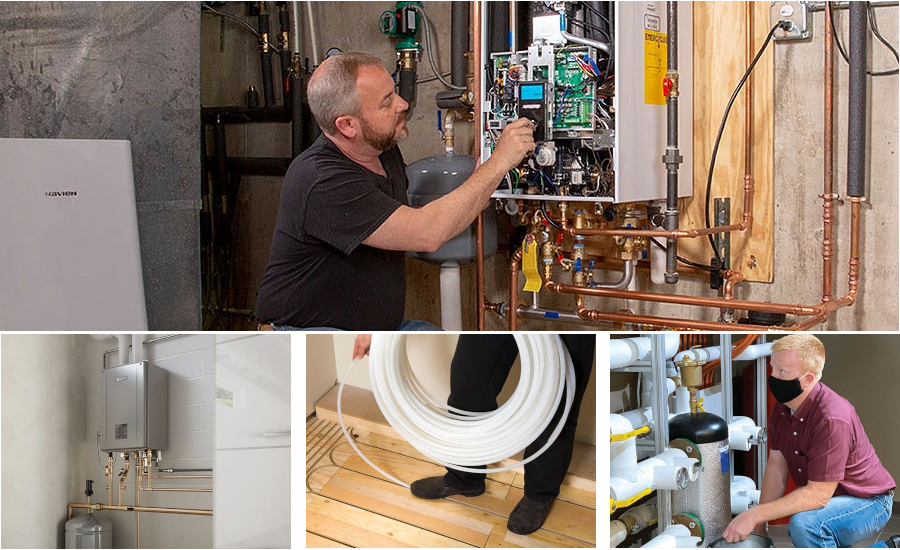
Top photo courtesy of Navien | Bottom left photo courtesy of Noritz | Bottom middle courtesy of Uponor | Bottom right photo courtesy of Caleffi Hydronic Solutions
The rise of combi boilers
According to Randy Oshiro, compliance and certification manager, Noritz, there is good market segment growth of combi boilers, as well as condensing boilers.
“Combi boilers reduce the amount of space needed in the mechanical room,” Oshiro notes. “Typically, you would need a separate boiler and water heater, and they are going to have separate vents, gas lines and electrical connections for each — that’s double the amount of equipment. Having a combination system condenses that all into one product, saving space. Also from the efficiency side, it’s one product, so there is only one set of flue losses.”
Another trend is a holistic approach to overall system efficiency rather than individual boiler efficiency, Oshiro adds.
“There is more awareness, not only from the industry and customer side, but also from utilities that the next real big gain is not going to be the efficiency of individual pieces of equipment, but as a whole,” he says. “Looking at how the system works together with the boiler, the thermostat and more, and how all of those play together and can create a more efficient overall system for the homeowner.”
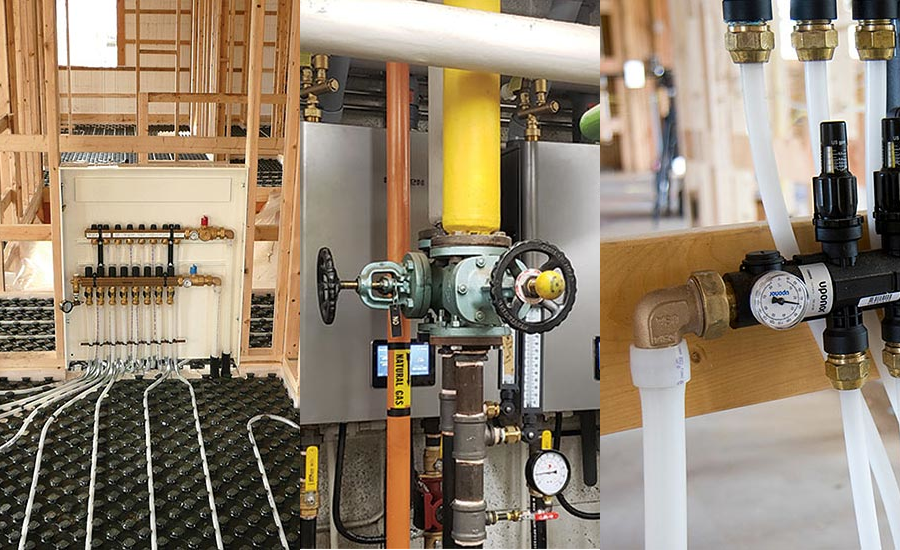
Mark Avron, director of sales, Triangle Tube, agreed combination boilers are a growing trend.
“A lot of the products and technology we get comes from Europe, so combi boilers have been on the market for almost 40 years now, but they’ve only been in the U.S. the last 10 years or so,” he says. “Last year, in 2019, was the first year that the combi boilers caught up with heat-only boilers, so it’s about 50% of the market right now.”
The reason behind that growth is combi boilers are more cost effective and have a lower upfront cost, Avron notes.
“When you look at long-term maintenance, costs are reduced because you’re only maintaining a single appliance and not multiple appliances. So that’s a trend that we think is going to continue, that shift towards the combi boiler.”
Avron also points to more attention being paid to the entire system and to system best practices.
“Historically, contractors would install a cast iron boiler, and realistically the maintenance was very low on the system side of things,” he says.
“Condensing boilers have been on the market for 18 years now, and it’s taken us this long to make people aware of the pitfalls of not paying attention to the entire system, such as water quality, air and dirt separation, descaling and more. The benefits are numerous —doing these things provide longer life expectancy for all components of the system. The boiler, obviously, is a big investment for the homeowner, but so are system components, such as pumps, valves and other products. So it extends the system life, but also provides better energy efficiency over a longer period of time.”
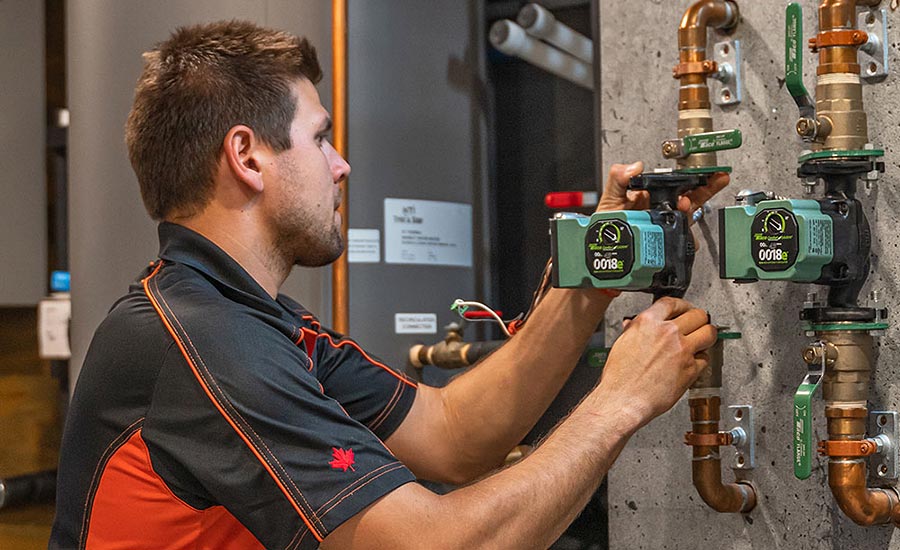
Environmental factors
Chuck O’Donnell, director of marketing for LAARS, says he is seeing the continuation of converting from standard efficiency to high efficiency equipment.
“Contractors and building owners are comparing long-term operational costs versus initial installation costs to shape decision making,” he says. “We're seeing a move towards equipment that utilizes oxygen trimming capabilities, or another type of electronic air-to-fuel ratio control, that optimizes efficiency. It's analogous to a car engine where it's always being monitored and adjusted for ideal performance. We've been adding those technologies to our commercial condensing product lines.
“It's important to distinguish between boilers that continuously monitor combustion and make real-time adjustments versus those that monitor, but then only intermittently adjust or never adjust the combustion,” he adds. “The benefit to real-time combustion management is, no matter what turndown the boiler is running at, it’s running at peak performance. Your efficiency levels aren’t only optimized at 100% firing rate, but also throughout the majority of the year when you’re firing at a lower rate — it provides stable performance and more reliable operation.”
O’Donnell notes utility rebates are driving these trends. “Also, many of these products have very low NOx emissions, so they’re looking at it from an environmental standpoint as well. Reduced gas use and lower emissions are driving that trend.”
The largest trend in the market relates to sustainability, electrification and decarbonization, according to Steve Swanson, national trainer at Uponor.
“What that means is requiring technologies to evolve and become more efficient,” he notes. “For example, the newest air-to-water heat pumps offer a coefficient of performance (COP) in the two, or even three, range. These products allow us to continue the positive hydronics message, since water is 3,500 times more efficient in carrying heat than air. Hydronics is the one, true sustainable delivery system for heating with higher capacity water over air without the need for environmentally unfriendly, and often toxic, refrigerants.
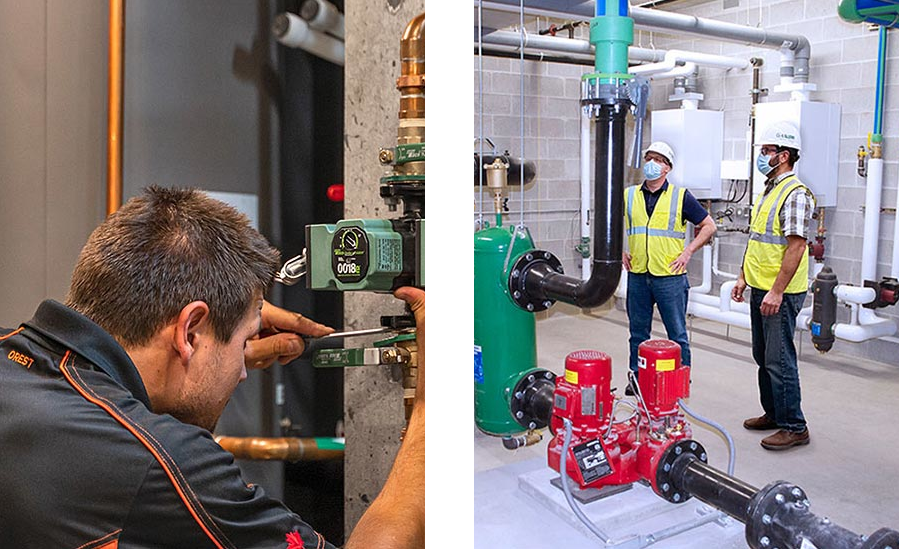
“Water is 100% reusable,” Swanson continues. “It is non-toxic, non-polluting, carbon neutral and offers zero ozone-depletion potential. Another trend is an all polymer piping solution for residential and commercial buildings to replace metallic piping. We are seeing a shift in the industry from metals to polymers because polymer piping systems, such as PEX or PP-RCT, offer greater system longevity due to their corrosion and rust resistance, plus they offer greater cost savings and require fewer chemical treatments.”
Swanson points to CO2 emissions when asked what is propelling this trend. These emissions are driving a climate change narrative, that, in turn, is causing local and state governments to mandate changes, he explains.
“New code changes are restricting or eliminating fossil-fuel heating systems for what is considered a more environmentally friendly electrification movement,” Swanson says. “The good news is hydronics is the perfect solution. Furthermore, the all-polymer piping solution trend is being driven by the desire to move away from mining metals for piping. Copper and steel piping cause large, open-pit mining that is environmentally not sustainable.”
Technology and hydronic products
According to Taco Comfort Solutions’ Director of Training John Barba, the biggest trend over the past few years is both the growing acceptance and understanding of ECM and variable speed technology.
“Early on, people thought this stuff was magic, meaning you just stick an ECM circulator in, press a button and it’ll figure everything out for you,” Barba says. “We saw the same thing with radiant floor heating and other technologies that have come along over the years. People like the idea, but they didn’t understand what it did or how it worked. We’re now seeing a growing acceptance of the technology, which goes hand in glove with people understanding how it works and what it does.”
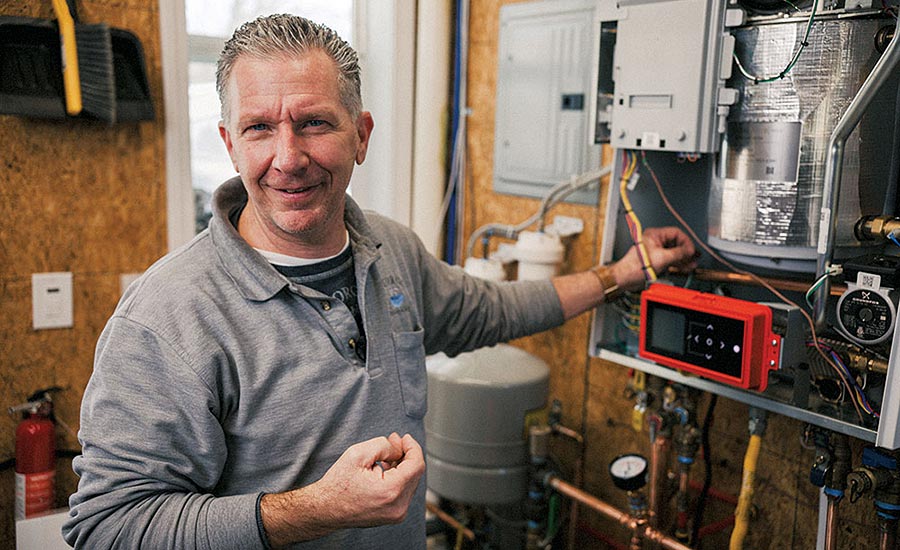
Barba also notes the development and evolution of variable speed ECM technology has led to a greater understanding of the importance of the circulator in overall system efficiency.
“There is — and has been for years — a chronic over-pumping problem in our industry because of the products we had,” he explains. “When you’re over-pumping, you create a whole slew of issues, including killing or severely limiting the efficiency of the boiler by having it short cycle. Then, we also wear out all the movable parts and components prematurely.
“The evolution of ECM technology has led us to understand we want to put in circulators that enhance the efficiency of the boiler, and thereby, the efficiency of the entire system,” he adds. “This is done by better matching the flow and head capabilities of the circulator to the flow and head requirements of the system.”
Kevin Freidt, director of product management and technical support, Caleffi Hydronic Solutions, says the largest industry trends he is seeing include the use of magnetic dirt separation and balancing valves with built-in flow meters as well as using demineralized water instead of site water to fill the system.
“The industry is recognizing the importance of removing ferrous ‘dirt,’ specifically magnetite, from hydronic systems,” Freidt notes. “The magnetite coats the surfaces of the heat exchangers and dramatically reduces heat transfer efficiency, resulting in hot spots and premature failure of the metal.
“Filling a system with demineralized water instead of whatever water is available on-site ensures high-quality fluid for the system, removing hard water minerals such as calcium and magnesium, which lead to scaling,” he continues. “Demineralized water also reduces galvanic corrosion to maximize the performance and longevity of hydronic system components. And a balancing valve with a built-in flowmeter, such as the Caleffi 132 Series QuickSetter, saves significant balancing time and labor costs while eliminating the need for a cumbersome and complicated differential pressure tool.”
Another key industry trend is value added product features that benefit contractors, such as easy and fast installation and built-in zone control, notes Phillip Maxwell, product manager — combi boiler, Navien.
“We are hearing from contractors and plumbers that labor constraints in the industry are creating an even greater need for faster installation and set-up,” Maxwell says. “Things like longer venting distances, set-up guides, plain-English controls and accessibility within the cabinet all come together to shave valuable time off of the install.”
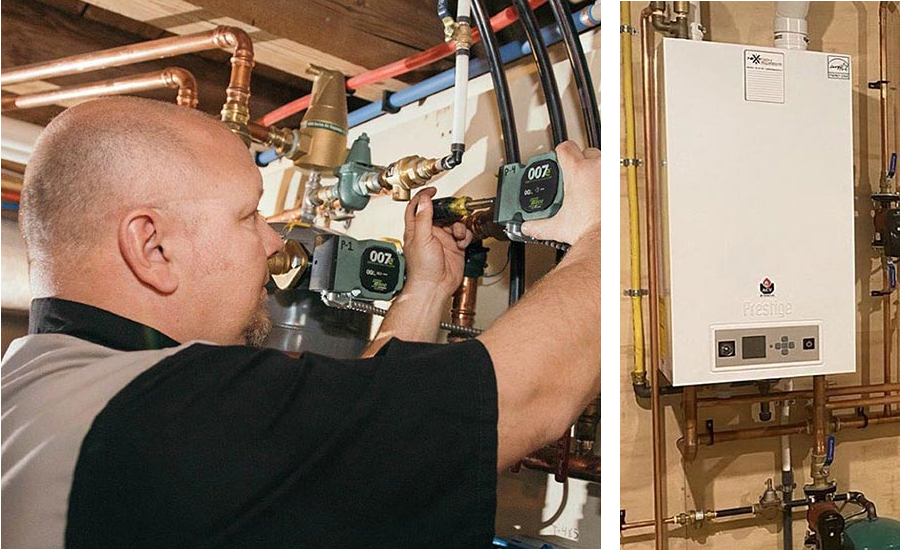
What’s next?
So where does the hydronic heating market go from here? According to Avron, it’s all about product development and keeping pace with the consumer demand for connectivity.
“We’ve got products in development right now that will have built-in connectivity that will help the homeowner in making sure the boiler is efficient,” Avron continues. “If there are problems, if they’re without heat or hot water, then they get notification immediately, and don’t have to wait until they get home to find out that the house is cold. It allows manufacturer and contractor to remotely look at the homeowner’s boiler and help troubleshoot it before arriving on the scene. Those type of things are going to help promote the industry, as we can stay relevant there.”
The other thing that will help promote growth is the increased integration of hybrid hydronic systems, Avron adds.
“Heat pumps have been in North America for a lot of years, and traditionally, they’ve been found in Southern states where they could provide air conditioning year-round and heating in the shoulder seasons. In Northern states, heat pumps really couldn’t provide enough heat because of the colder climate. But the technology has improved over the years, and heat pumps can provide a vast majority of heating even in colder climates, but they still need supplementing. So for those in the Northeast or Midwest can now supplement a heat pump system with a boiler or combi boiler. Those types of things are going to help promote the hydronic industry, just in keeping up with technology and being able to integrate with new technologies that are coming on to the market as well.”
Barba notes utility companies’ maxed out energy grids will force people building new structures to find alternate ways to heat and cool their buildings.
“The movement is called electrification,” he says. “So now, we’re looking at products like air-to-water heat pumps. It’s a new world. We’re looking at how they can be made easy to install, service, understand and troubleshoot. Make that technology accessible to somebody so they don’t resist it. That to me is going to be the biggest trend over the next five to 10 years. It’s going to be one of those things that if it happens, it will be a utility here, a utility there, and then, boom! It’s going to be an avalanche. So as an industry, we have got to be ready for that.”
ADVICE FOR CONTRACTORS
According to Phillip Maxwell, product manager — combi boiler, Navien, the most common mistake a contractor can make when installing a hydronic heating system is ignoring the instructions manual.
“As simple as it may sound, reading the installation instructions specific to the brand and model you are installing is the easiest way to avoid common mistakes,” he notes. “But beyond that, mistakenly forgetting a step along the way during startup can cause a major headache once the system is up and running. Incorrect sizing of pumps, not flushing the old system completely and not fully air bleeding the system are common mistakes we hear and see.”
Maxwell adds that set-up wizards or startup guides, built in to the controls of the new unit help guide plumbing contractors through each major step by asking a series of yes or no questions before moving to the next step in the setup sequence.
“Contractor training programs along with a network of factory authorized service techs is the best way the industry can help prevent costly mistakes,” he says.
Kevin Freidt, director of product management and technical support, Caleffi Hydronic Solutions, notes the most important consideration when installing hydronic systems is to specify a good quality air separator, such as Caleffi’s Discal.
“The air separator should be located in the boiler hot supply line where it will maximize air removal efficiency to reduce the potential for corrosion and noise,” he explains. “Additionally, a high-quality magnetic dirt separator should be specified for the boiler return line, to protect the boiler heat exchanger.
“A thorough cleaning and flushing using appropriate chemicals made specifically for hydronic systems before refilling (using demineralized water) is imperative for retrofit projects,” he adds.
When it comes to retrofitting existing hydronic systems, Chuck O’Donnell, director of marketing for LAARS, says the thing to watch for is venting.
“In older installations, especially in cities, there’ll be a large chimney, and you cannot vent a condensing product in that chimney without lining the chimney, and that could be very expensive,” he notes. “The other thing is, if it's more than say a 100-150 feet, then you're going to have to install a fan to help vent the exhaust from the condensing product. Whereas on a non-condensing product, you could put that in there and still use the chimney, as long as the efficiency doesn't reach over a certain point, because that could be dangerous to vent flue products that are too low of a temperature into a chimney.
The other thing —if it’s a replacement job —is to look at the piping and make sure it was done properly,” he adds. “Because, a lot of times, if the piping isn’t being evaluated, you could be inheriting some issues that might be attributed to the boiler when it's really not the boiler, it could be the piping design. It's always important to look at that.”
Randy Oshiro, compliance and certification manager, Noritz, agrees that venting is a common mistake seen in the industry, mainly because it is an afterthought in many situations.
“We’ve seen cases where venting was just shoehorned in after a lot of things were put into place because it wasn’t laid out in the plans,” he says. “It’s up to the contractor to find a way to make it work, which can obviously lead to problems as far as meeting clearances or not having a proper route to run. The other thing that often times comes up is the overall wiring and setting up of the system — especially for contractors who aren't really familiar with a specific piece of equipment.”
Combi boilers are a bit newer to the market, and the overall setup is different than a traditional boiler, Oshiro explains. Noritz gets a lot of calls and questions about the best way to setup the product because there is a lot of customization options available.
“As with a lot of things, it really comes down to training and making the information available so if a contractor doesn’t know the answer, they know where to go to get the information,” he says. “During this whole COVID-19 situation, many manufacturers have launched online trainings. That goes a long way, especially in the times we’re in now where face-to-face contact is reduced.”
Steve Swanson, national trainer at Uponor, points to oversizing as one of the biggest mistakes that can lead to many issues with hydronic systems.
“Another issue is not providing a sequence of operation document to leave on the job. With today’s technical control packages and intricate piping installations, troubleshooting a year later can be a real pain.”
Mark Avron, director of sales, Triangle Tube, has several tips for contractors when it comes to performing routine maintenance to ensure systems are operating at peak efficiency.
“There are a couple of things that drive peak efficiency — one is combustion efficiency, is your boiler tuned up properly?” he says. “The only way to know that is through using a combustion analyzer — it’s something that should be used on every installation and every service call. At Triangle Tube, we’ve started offering longer warranties for our contractors that provide us with a copy of their combustion analysis when they register the product.
“The other thing I recommend contractors look at is heat transfer,” he continues. “One way of doing that is to inspect the heat exchanger. If it’s dirty, it needs to be cleaned. That’s one thing that doesn’t happen very often. As the heat exchanger gets scale or sediment build up on it, that scale or sediment acts as an insulator between the combustion side and the water side, slowing down heat transfer and decreasing energy efficiency.”
Manufacturers like Triangle Tube provide a checklist of everything that should be looked over during annual maintenance, Avron notes.
“The best advice I can offer is to verify everything — don’t assume,” he says.
Per John Barba, Taco Comfort Solutions’ director of training, the biggest mistakes contractors make is believing in magic and not understanding the technology.
“Honestly, I’ve heard people say, ‘Use this pump — it’s a magic pump! It takes the thinking out of it.’ I can think of any more insulting or, quite frankly, moronic statements. Unless you went to Hogwarts, there is no such thing as magic when it comes to a pump. If anything, we need to put more thinking into hydronics, because seriously, if we had a magic pump, what do we need professionals for? “Once you get past magic, not taking full advantage of the technology in front of you is another mistake,” he continues. “For example, with modulating condensing boilers. I still talk to people who say, ‘I don't bother doing a heat loss for a replacement boiler. I'm putting in a mod con boiler. I put it in the same boiler every time, because it's easier for me. And that boiler will modulate down to the right size. It won't be oversized.’ Well, that's half true. It won't be oversized on the high end, but it will be oversized most likely on the low end. And what's more, that installer has potentially taken this boiler that has a 10:1 turndown ratio, to maybe a 5:1 or 4:1 turndown ratio because it’s going to be so much bigger than it needs to be. So you’re selling a customer a 10:1 turndown ratio boiler, but only giving them half of it. I don’t know of any other industry that would think that’s OK.
“Adopting technology is one thing, understanding the technology and using it to your advantage is quite another,” Barba says.
Looking for a reprint of this article?
From high-res PDFs to custom plaques, order your copy today!










